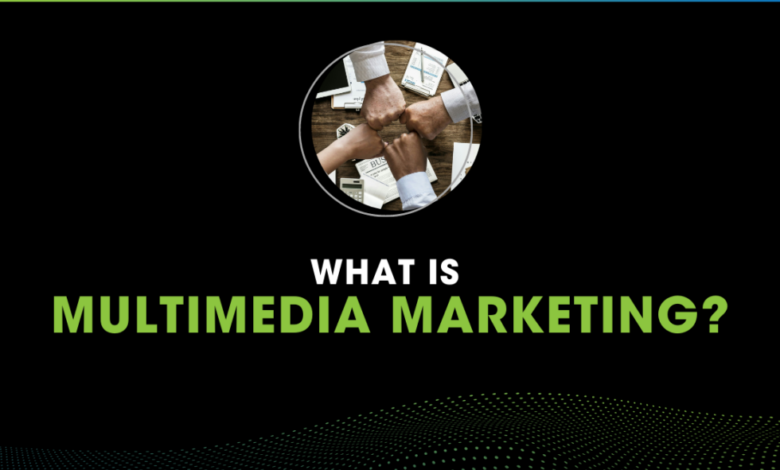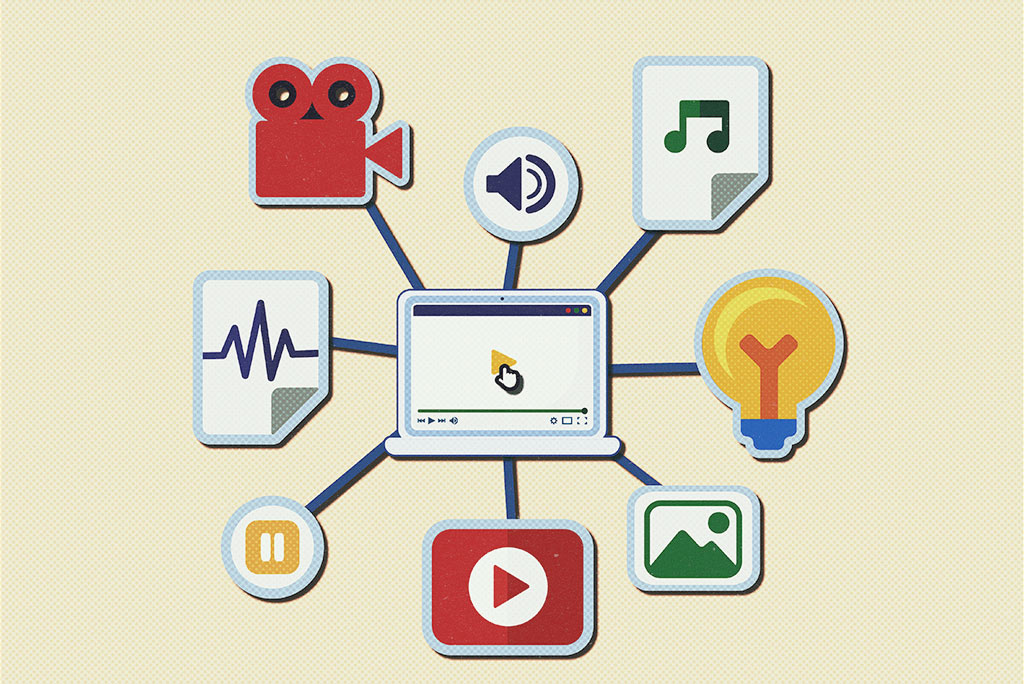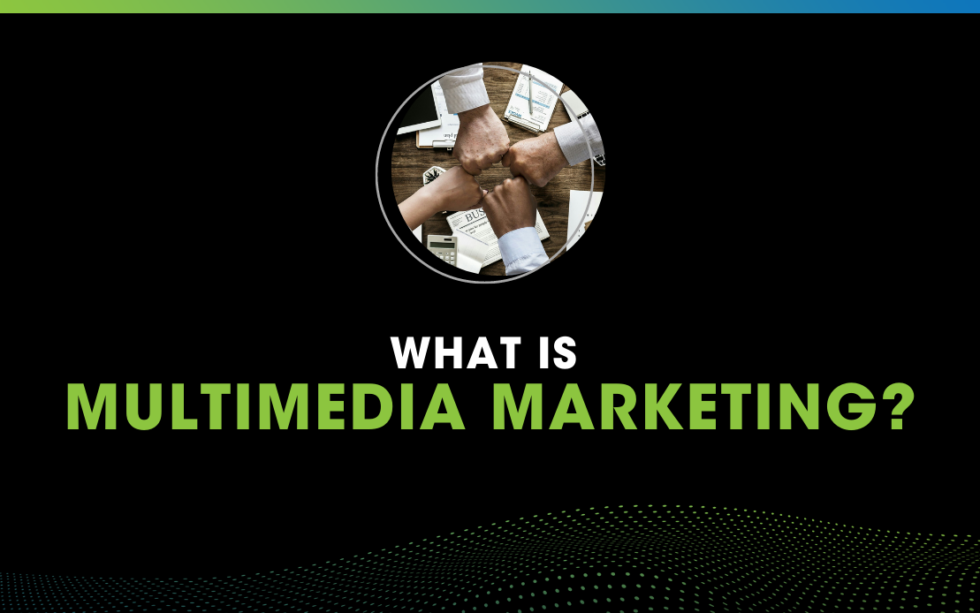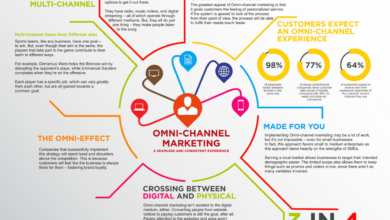
Rich Media in Marketing A Deep Dive
Rich media in marketing isn’t just about flashy visuals; it’s about crafting experiences that resonate. Think beyond static banners and imagine interactive ads that captivate your audience, videos that tell compelling stories, and even augmented reality experiences that blur the lines between the digital and physical worlds. This post dives deep into the world of rich media, exploring its power to boost engagement, drive conversions, and ultimately, help your brand stand out in a crowded marketplace.
We’ll cover everything from defining rich media and exploring its various formats to measuring its effectiveness and gazing into its exciting future.
From understanding the core components of rich media and its evolution to mastering its application across various marketing channels, we’ll unravel its complexities and unlock its potential. We’ll also delve into creating engaging rich media experiences, optimizing them for different devices, and analyzing successful campaigns to learn from the best. Get ready to elevate your marketing game!
Defining Rich Media in Marketing
Rich media in marketing represents a significant evolution from traditional static advertisements. Instead of relying solely on text and static images, rich media leverages interactive elements, animation, and advanced technologies to create engaging and memorable experiences for consumers. This approach significantly boosts brand recall and drives deeper engagement compared to more passive forms of marketing.Rich media’s core components revolve around interactivity and dynamic content delivery.
Unlike static print ads or simple banner ads, rich media allows for user interaction, personalization, and data capture. This interactivity is achieved through various technologies and formats, leading to more effective communication and better conversion rates. Key components include engaging visuals, interactive elements (like buttons, sliders, and rollovers), personalized content based on user behavior, and data tracking to measure campaign performance.
This multifaceted approach differentiates it from traditional marketing materials, which are largely unidirectional and less adaptable.
Rich media is king in today’s marketing landscape, demanding engaging visuals and interactive experiences. To deliver these effectively, developers need powerful tools, and that’s where the future of app development comes in, as explored in this insightful article on domino app dev the low code and pro code future. Understanding these advancements helps marketers create richer, more impactful campaigns, ultimately boosting engagement and ROI.
Rich Media Formats in Marketing
The following table details various rich media formats commonly employed in marketing campaigns. Each format offers unique advantages and disadvantages, influencing its suitability for specific campaigns and target audiences.
| Format | Description | Advantages | Disadvantages |
|---|---|---|---|
| Video Ads | Short video clips often incorporating animation, storytelling, and calls to action. | High engagement, excellent for storytelling, versatile across platforms. | Production can be costly, requires careful planning and targeting for effectiveness. |
| Interactive Banners | Banner ads with embedded elements such as rollovers, expandable sections, and embedded games. | Increased click-through rates, higher user engagement than static banners. | Can be complex to develop, may not be suitable for all websites or ad platforms. |
| 360° Videos | Videos allowing users to explore a scene from any angle, creating an immersive experience. | Highly engaging, provides a unique perspective, excellent for showcasing products or locations. | Requires specialized equipment and software, can be demanding on device resources. |
| Rich Media Games | Branded games integrated into advertising campaigns, offering entertainment and brand interaction. | High engagement, memorable brand experience, potential for viral sharing. | Development can be expensive and time-consuming, requires careful game design. |
Evolution of Rich Media in Marketing
The evolution of rich media has been closely tied to technological advancements in digital advertising. Early examples included simple animated GIFs and Flash banners. However, the widespread adoption of HTML5 and the rise of mobile devices spurred a shift towards more sophisticated formats. Key milestones include the introduction of interactive video ads, the development of advanced ad tracking technologies, and the increasing integration of programmatic advertising.
The move towards personalized and data-driven advertising further enhanced the effectiveness of rich media, enabling marketers to tailor their campaigns to individual consumer preferences and behaviors. For example, the rise of programmatic advertising, beginning in the early 2010s, allowed for more precise targeting and real-time optimization of rich media campaigns, maximizing their impact. Similarly, the growing prevalence of mobile devices has pushed the development of rich media formats optimized for smaller screens and touch interactions.
Types and Applications of Rich Media

Rich media, in its diverse forms, is revolutionizing how brands connect with their audiences. Moving beyond static images and text, rich media leverages interactive elements to create engaging and memorable experiences, ultimately boosting brand recall and driving conversions. This section delves into the various types of rich media, their applications across different industries, and their effective deployment across various marketing channels.
Categorization of Rich Media Formats Based on Interactivity and Engagement
Rich media formats can be categorized based on a spectrum of interactivity and engagement. At one end, we have relatively simple formats like expandable banners, which offer limited interaction but still provide a richer visual experience than static ads. At the other end lie highly interactive experiences like 360° product views and interactive games, which deeply engage users and encourage prolonged interaction.
In between, we find a range of formats offering varying degrees of interactivity, such as video ads with clickable elements or interactive infographics. The choice of format depends heavily on the marketing objective and the target audience.
Examples of Successful Rich Media Campaigns Across Different Industries
Successful rich media campaigns often demonstrate a clear understanding of their target audience and the platform they’re using. Here are a few examples showcasing the power of rich media across diverse sectors:
- E-commerce: Warby Parker, an online eyewear retailer, utilized interactive quizzes and virtual try-on tools to allow users to experiment with different frames before purchasing. This increased engagement and reduced purchase hesitation, leading to higher conversion rates. The rich media experience mirrored the in-store experience, but with greater convenience and personalization.
- Finance: A financial institution might use an interactive infographic to explain complex investment products in a simplified and visually appealing manner. This approach makes financial information more accessible to a wider audience, fostering trust and understanding. The clear, concise visuals improved comprehension, resulting in increased interest and potential customer acquisition.
- Entertainment: Movie studios frequently use rich media trailers that allow users to click on specific elements to learn more about the cast, plot, or release date. This interactive approach provides a more engaging preview, generating excitement and anticipation for the film’s release. The interactive element encouraged deeper engagement and a more positive association with the movie.
Rich Media in Various Marketing Channels
The versatility of rich media extends across multiple marketing channels, each presenting unique opportunities for engagement.
- Email Marketing: Animated GIFs and short videos embedded within emails can capture attention and improve open and click-through rates. However, it’s crucial to consider email client compatibility and ensure the rich media elements load quickly to avoid user frustration.
- Social Media Marketing: Platforms like Instagram and Facebook are ideally suited for visually engaging content. Rich media, such as interactive stories, polls, and carousel ads, can significantly enhance audience interaction and brand visibility. The inherent visual nature of these platforms synergizes well with rich media’s strengths.
- Website Marketing: Rich media can transform static website pages into dynamic and engaging experiences. Interactive product demos, 360° product views, and personalized recommendations are just a few examples of how rich media can improve user experience and drive conversions on websites. This creates a more immersive and informative experience for website visitors.
Creating Engaging Rich Media Experiences
Crafting truly engaging rich media experiences goes beyond simply slapping together flashy visuals and interactive elements. It requires a deep understanding of your target audience, a clear message, and a commitment to seamless user experience. The goal is to create an experience that’s not just memorable, but also drives conversions and strengthens brand affinity. This involves careful planning, strategic design choices, and meticulous testing across various platforms.
Effective rich media leverages the power of interactivity to capture attention and deliver a compelling message. It’s about more than just eye-catching visuals; it’s about creating a dialogue with the user, making them an active participant in the experience rather than a passive observer. This fosters a deeper connection with your brand and increases the likelihood of engagement and desired actions.
Rich Media Ad Design: A Hypothetical Example
Let’s imagine we’re creating a rich media ad for “Aura,” a new aromatherapy diffuser with smart home integration. The ad would open with a visually stunning animation of the diffuser gently emitting a calming mist, accompanied by soft, ambient music. The visual style would be clean and minimalist, featuring a predominantly white background to highlight the sleek design of the Aura diffuser.
The animation would subtly shift to showcase different color options available. Interactive elements would include clickable hotspots revealing key features like voice control via smart home assistants, customizable scent profiles, and a built-in timer. A prominent call-to-action button, “Learn More & Shop Now,” would be strategically placed, encouraging users to visit the product website. The entire ad would maintain a consistent brand aesthetic, reflecting Aura’s premium positioning and focus on relaxation and wellness.
User Experience (UX) in Rich Media Design, Rich media in marketing
User experience is paramount in rich media advertising. A poorly designed ad, no matter how visually appealing, will quickly frustrate users and lead to disengagement. Seamless navigation, intuitive controls, and a clear visual hierarchy are essential. Every interactive element should have a clear purpose and contribute to the overall user journey. The design should be responsive, adapting smoothly to different screen sizes and devices, ensuring a consistent and positive experience across platforms.
A/B testing different design elements can help optimize the user experience and identify what resonates best with the target audience. For example, testing different placements of the call-to-action button can significantly impact click-through rates.
Optimizing Rich Media for Different Devices and Screen Sizes
Responsive design is not just a best practice; it’s a necessity. Rich media ads must be optimized to perform flawlessly across a wide range of devices, from smartphones and tablets to desktops and laptops. This requires using flexible layouts, scalable images, and adaptable animations. Testing on various devices and screen resolutions is crucial to identify and address any compatibility issues or display inconsistencies.
Using industry-standard responsive design techniques ensures that the ad maintains its visual appeal and functionality across all platforms, preventing a fragmented user experience and maximizing reach. Failing to do so can lead to a significant loss in potential engagement and conversions.
Measuring the Effectiveness of Rich Media: Rich Media In Marketing
Understanding the impact of your rich media campaigns is crucial for optimizing future efforts and maximizing ROI. Simply creating engaging ads isn’t enough; you need concrete data to demonstrate their effectiveness and justify continued investment. This involves carefully selecting key performance indicators (KPIs) and employing robust tracking methods.Rich media offers unique opportunities for detailed measurement, far exceeding the capabilities of traditional static ads.
By leveraging the interactive and dynamic nature of rich media, marketers can gain a deeper understanding of audience engagement and conversion pathways. This allows for more targeted campaigns and refined messaging, leading to improved campaign performance over time.
Key Performance Indicators (KPIs) for Rich Media Campaigns
Tracking the success of your rich media campaigns requires a multifaceted approach. The following table Artikels key KPIs, their measurement methods, interpretation, and illustrative examples.
| KPI | Measurement Method | Interpretation | Example |
|---|---|---|---|
| Engagement Rate | Tracking clicks, hover time, video completion rates, and interactions with interactive elements (e.g., polls, quizzes). Use ad server analytics and platform-specific tools. | Higher engagement rates indicate greater audience interest and effective messaging. Low engagement may signal a need for creative revisions or targeting adjustments. | A video ad with a 70% completion rate and an average hover time of 15 seconds suggests high engagement compared to a similar ad with a 30% completion rate and 5-second hover time. |
| Click-Through Rate (CTR) | Number of clicks divided by the number of impressions. Tracked via ad server analytics and platform-specific tools. | Higher CTRs suggest compelling creative and effective targeting. Low CTRs may indicate poor ad placement, irrelevant messaging, or ineffective targeting. | A CTR of 2% for a rich media banner ad is considered good, while a 0.5% CTR might suggest optimization is needed. |
| Conversion Rate | Number of conversions (e.g., purchases, form submissions, downloads) divided by the number of clicks or impressions. Requires integration with conversion tracking pixels or APIs. | Higher conversion rates directly reflect the campaign’s success in driving desired actions. Low conversion rates suggest problems with the landing page, call-to-action, or overall user experience. | A rich media campaign driving a 5% conversion rate from clicks is significantly better than a campaign with a 1% conversion rate, indicating a more effective approach. |
| Viewability | Percentage of time the ad was on screen and visible to the user. Measured using viewability tracking tools integrated with ad servers. | High viewability indicates that the ad was actually seen by users, ensuring the investment was not wasted on unseen ads. Low viewability suggests issues with ad placement or user experience. | A viewability rate of 70% means the ad was visible to users 70% of the time it was displayed, which is considered good. A rate below 50% indicates a problem. |
Rich Media vs. Traditional Marketing: A Comparative Analysis
Rich media significantly outperforms traditional methods in several key areas. While traditional print, radio, or even static banner ads offer limited interaction and measurability, rich media provides a more engaging and trackable experience. For instance, achieving high brand recall is easier with rich media due to its interactive nature, leading to stronger brand awareness and higher engagement. Traditional methods, like print ads, are more challenging to measure precisely.
Rich media allows for A/B testing of different creative elements and targeting strategies, leading to continuous optimization and improved results. The detailed tracking capabilities of rich media also provide insights into user behavior, which traditional methods often lack.
Case Study: A Successful Rich Media Campaign
Imagine a hypothetical campaign for a new line of athletic wear. Instead of a simple banner ad, the brand utilized a rich media interactive experience featuring a 360° view of a model showcasing the clothing. Users could click on different parts of the outfit to learn more about the material, technology, and features. Embedded videos showed athletes using the products.
A quiz at the end allowed users to find the perfect outfit based on their activity level and preferences.The campaign’s success was measured by several KPIs. The engagement rate was exceptionally high (80% video completion rate, average hover time of 20 seconds), leading to a 3% click-through rate. Crucially, the conversion rate was a remarkable 7%, significantly exceeding the average conversion rate for traditional banner ads in the same industry.
This success was attributed to the highly engaging format, personalized experience, and effective call-to-actions. The key lesson learned was the importance of creating interactive, personalized experiences that resonate with the target audience, leading to significantly improved engagement and conversion rates compared to traditional methods.
The Future of Rich Media in Marketing

Rich media marketing is constantly evolving, driven by advancements in technology and changing consumer behavior. The future promises even more immersive, personalized, and interactive experiences, blurring the lines between the digital and physical worlds. We’re moving beyond simple banner ads towards truly engaging and impactful campaigns that foster deeper connections with audiences.
The next generation of rich media will leverage emerging technologies to create more sophisticated and personalized marketing strategies. This will lead to higher engagement rates, improved conversion metrics, and a more effective return on investment for marketers. The focus will shift towards creating seamless, omnichannel experiences that resonate with consumers across various platforms and devices.
Emerging Trends and Technologies
Several key trends and technologies will shape the future of rich media marketing. These advancements are not isolated developments but rather interconnected forces driving innovation in the field.
- Increased use of Artificial Intelligence (AI): AI will power hyper-personalization, allowing marketers to tailor rich media experiences to individual users based on their preferences, behaviors, and past interactions. This will involve dynamic content creation, personalized recommendations, and AI-driven optimization of campaign performance.
- Expansion of Augmented Reality (AR) and Virtual Reality (VR): AR and VR will offer immersive brand experiences, allowing consumers to interact with products and services in a new way. Imagine trying on clothes virtually or taking a virtual tour of a new car – all within a rich media advertisement.
- Programmatic Creative: This technology allows for the automated creation and optimization of rich media ads based on real-time data and audience insights. This ensures ads are always relevant and engaging, maximizing their impact.
- Growth of Interactive Video: Interactive video ads allow viewers to make choices within the video itself, influencing the narrative and outcome. This level of engagement significantly increases brand recall and memorability.
- Enhanced Data Analytics and Measurement: More sophisticated analytics tools will provide marketers with a deeper understanding of how consumers interact with rich media. This data will be crucial for optimizing campaigns and improving ROI.
The Impact of Artificial Intelligence and Augmented Reality
AI and AR are poised to revolutionize rich media marketing. Their combined power will create unprecedented opportunities for brands to connect with their audiences on a more personal and engaging level.
AI will enable highly personalized rich media experiences. Imagine an ad that dynamically adjusts its content based on a user’s browsing history, social media activity, or even their real-time location. This level of personalization will increase engagement and drive conversions. For example, a clothing retailer might use AI to show users only items matching their preferred style and size, based on their past purchases and browsing behaviour.
AR, meanwhile, will create immersive experiences that bridge the gap between the digital and physical worlds. This could involve interactive product demonstrations, virtual try-ons, or even gamified ad experiences that reward users for engagement. Think of a furniture retailer using AR to allow customers to virtually place furniture in their homes before purchasing, eliminating uncertainty and increasing confidence in their buying decision.
A Hypothetical Future Rich Media Campaign
Imagine a future campaign for a luxury watch brand. The campaign begins with a personalized video ad delivered via social media. The video uses AI to tailor its content based on the user’s profile, highlighting specific watch models that align with their style and preferences. The video features stunning visuals and interactive elements, allowing users to zoom in on details of the watch and explore its features.
Clicking on the video takes the user to an AR experience on their mobile device. Using their phone’s camera, they can virtually “try on” the watch, seeing how it looks on their wrist. The AR experience also provides access to additional information about the watch, including technical specifications and customer reviews. Finally, the experience culminates in a seamless transition to the brand’s e-commerce site, making it easy for the user to purchase the watch.
Epilogue
Rich media in marketing offers a powerful way to connect with your audience on a deeper level, fostering engagement and driving results that traditional methods often struggle to achieve. By understanding the different formats, optimizing for user experience, and meticulously tracking key performance indicators, you can harness the full potential of rich media to achieve your marketing goals. The future of rich media is bright, with emerging technologies promising even more immersive and personalized experiences.
So, embrace the power of rich media and prepare to see your marketing campaigns soar to new heights!
FAQ
What’s the difference between rich media and traditional marketing?
Traditional marketing relies on static materials like print ads or simple banners. Rich media uses interactive elements like video, animation, and user engagement features to create a more immersive experience.
How much does rich media advertising cost?
The cost varies greatly depending on the complexity of the ad, the platform used, and the length of the campaign. It’s generally more expensive than traditional advertising but can offer a higher return on investment due to increased engagement.
What are some common mistakes to avoid when creating rich media ads?
Common mistakes include poor user experience (slow loading times, confusing navigation), ignoring mobile optimization, and failing to track key performance indicators (KPIs).
Is rich media suitable for all businesses?
While rich media can benefit many businesses, it’s most effective for those with a strong brand identity and a willingness to invest in high-quality creative assets. It might not be the best fit for businesses with extremely limited budgets.

